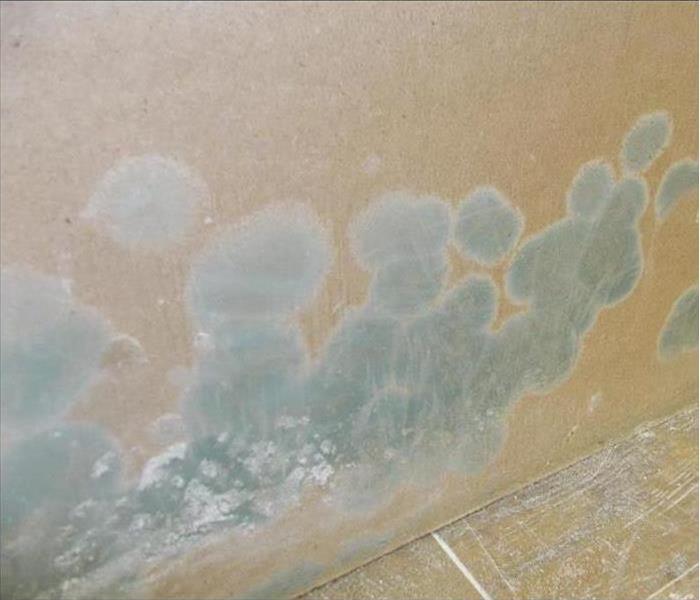What Does Mold Containment and Remediation Involve?
10/29/2021 (Permalink)
So you’ve found mold in your Guthrie, OK, home. While your first step should be to contact a mold remediation specialist, while you wait for help you need to stop the spread of mold contamination and initiate proper containment prior to remediation. Containment can keep mold from spreading to uncontaminated areas – but what does mold containment and remediation actually entail?
Steps to Take for Mold Containment
Mold contamination is so serious even the CDC addresses it with guidelines for containment and remediation. For containment, you should:
1. Immediately shut off water around the affected area. Water feeds mold, and you may have a leak or broken pipe that’s making the issue worse.
2. Blot the affected area as dry as possible. Any standing water is just giving mold more fuel to breed, so dry up any water. Use gloves, as the water may contain mold contamination.
3. Shut off HVAC systems. Mold spores can spread through HVAC systems and contaminate other areas of the house.
4. Remove contaminated materials and dispose of them appropriately. Your carpet may have picked up a mold infestation, or items of clothing lying around. You may need to wait for remediation for a full tear-out, but get rid of anything disposable ASAP.
5. Seal off the area. If possible, close off the area with an airtight seal. Tape windows and doors, and close and cover air vents.
6. Use antifungals and mold prevention solutions on the rest of the house. You can use off-the-shelf antifungals as a spray defense toward the rest of your house against the spread of mold.
What Remediation Involves
A mold remediation specialist will not only check the discovered infestation but inspect your entire house thoroughly to identify any other sources of mold. The type of mold and the depth of the contamination will determine what remediation may involve, from the use of HEPA air filters to a complete tear-out of infested drywall, flooring, or carpeting.



 24/7 Emergency Service
24/7 Emergency Service
